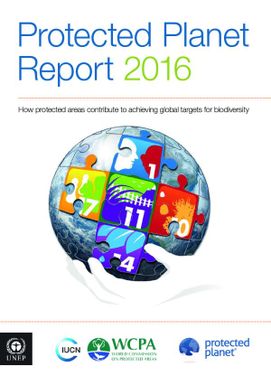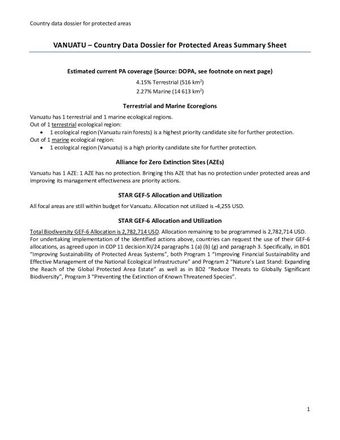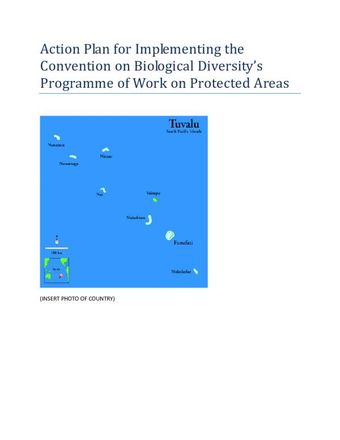Protected Planet Report 2016
- Description:
- In 2010, the Parties to the Convention on Biological Diversity (CBD), adopted the Strategic Plan for Biodiversity 2010-2020 and its 20 Aichi Biodiversity Targets. It has since been endorsed by multiple Multilateral Environmental Agreements as a global framework for biodiversity. In 2015, the members of the United Nations adopted the 2030 Agenda for Sustainable Development and its Sustainable Development Goals. These constitute two of the most important environment and sustainable development commitments ever made by governments in the international fora, and both recognize the important role of protected areas as a key strategy for biodiversity conservation and sustainable development in the targets they contain, for example, Aichi Biodiversity Target 11, SDG goals 14 and 15. The global protected areas estate is therefore an important contribution to achieving these commitments. The Protected Planet Report 2016 assesses how protected areas contribute to achieving the Aichi Biodiversity Targets and relevant targets of the Sustainable Development Goals, and highlights current research and case studies as examples of the role protected areas play in conserving biodiversity and cultural heritage.
- Display date:
- 2016
- Collections:
- Secretariat of the Pacific Regional Environment Programme (SPREP)
- Publisher:
- United Nations Environment Programme (UNEP) World Conservation Monitoring Centre (WMCM), International Union for Nature Conservation (IUCN)
- Content partner:
- Secretariat of the Pacific Regional Environment Programme (SPREP)
- Availability:
- Not specified
-
Copyright status: All rights reservedFind out more about what you are able to do with this itemThis item is all rights reserved, with means you'll have to get permission from Secretariat of the Pacific Regional Environment Programme (SPREP) before using it. For more information, please see our use and reuse page.What can I do with this item?Non-infringing useNZ copyright law does not prevent every use of a copyright work, and this item may be hosted by an international institute or organisation. You should consider what you can and cannot do with a copyright work.No sharingYou may not copy and/or share this item with others without further permission. This includes posting it on your blog, using it in a presentation, or any other public use.No modifyingYou are not allowed to adapt or remix this item into any other works.No commercial useYou may not use this item commercially.
Related items
Welcome and warm Pasifik greetings
The information on this site has been gathered from our content partners.
The names, terms, and labels that we present on the site may contain images or voices of deceased persons and may also reflect the bias, norms, and perspective of the period of time in which they were created. We accept that these may not be appropriate today.
If you have any concerns or questions about an item, please contact us.


